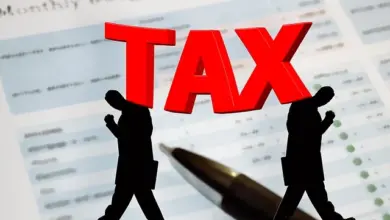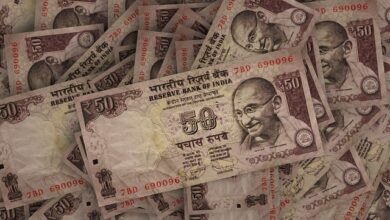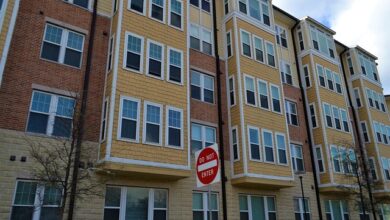Electricity, Gas, and Water Expenses in the Netherlands: A Comprehensive Guide

When planning to live in the Netherlands, understanding utility costs is essential for budgeting and managing your monthly expenses. Electricity, gas, and water are fundamental services that contribute significantly to your overall cost of living. This guide will provide an overview of these utilities, their average costs, how they are billed, and tips for reducing expenses.
1. Electricity Costs in the Netherlands
The Netherlands has relatively high electricity prices compared to other European countries, primarily due to taxes and renewable energy investments. However, energy-efficient practices can help mitigate costs.
Average Monthly Costs
- The average monthly electricity bill for a standard household (80–100 square meters) ranges from €70 to €120 , depending on usage, location, and the size of the property.
- For smaller apartments or low-energy households, bills may be as low as €50–€80 per month .
- High-energy users (e.g., large homes with electric heating or air conditioning) can expect bills exceeding €200 per month , especially during winter.
Factors Influencing Costs
- Energy Provider: The Dutch energy market is deregulated, allowing consumers to choose from various providers such as Eneco, Vattenfall, Essent, and smaller green energy companies.
- Tariffs: Prices vary based on consumption levels and whether you opt for fixed-rate or variable-rate contracts.
- Taxes and Fees: Energy prices include significant taxes, such as the Opslag Duurzame Energie (ODE) surcharge, which funds renewable energy initiatives.
- Electric Heating: Homes with electric heating systems tend to have higher electricity consumption.
Billing System
- Bills are typically issued every two months and can be paid monthly via direct debit or in full.
- Providers often offer online tools to monitor and manage your energy usage.
Tips to Save on Electricity
- Switch to energy-efficient appliances (look for the EU energy label).
- Use LED lighting and turn off unused devices.
- Optimize heating by adjusting thermostats and insulating your home.
- Compare providers regularly to find the best rates, especially if you’re on a variable-rate contract.
2. Gas Costs in the Netherlands
Natural gas is widely used in Dutch households for heating, cooking, and hot water. While gas prices fluctuate due to global market conditions, they remain a significant part of utility expenses.
Average Monthly Costs
- The average monthly gas bill for a standard household ranges from €40 to €80 , depending on usage and whether gas is used for heating.
- Homes with central gas heating may see higher bills, especially during colder months.
Factors Influencing Costs
- Energy Provider: Major suppliers like Eneco, Essent, and Vattenfall offer competitive rates, but smaller providers may have better deals.
- Tariffs: Similar to electricity, gas prices vary based on consumption levels and contract types.
- Usage Patterns: Gas consumption spikes during winter due to heating needs.
Billing System
- Like electricity, gas bills are typically issued every two months and can be paid monthly or in full.
- Providers often offer discounts for paperless billing or automatic payments.
Tips to Save on Gas
- Insulate your home to reduce heating needs.
- Use energy-efficient boilers and radiators.
- Lower your thermostat by 1–2°C to save significantly on heating costs.
- Regularly maintain your heating system to ensure efficiency.
3. Water Costs in the Netherlands
Water in the Netherlands is generally affordable, with costs varying slightly by region due to differences in infrastructure and local taxes.
Average Monthly Costs
- The average water bill for a household ranges from €20 to €40 per month , depending on consumption and location.
- In rural areas, where water infrastructure may be less developed, costs can be slightly higher.
Factors Influencing Costs
- Regional Differences: Water prices are set by local water authorities (waterschappen), so costs vary across regions. For example, water tends to be cheaper in urban areas and more expensive in rural regions.
- Usage: Average water consumption per person is about 120 liters per day , but this can increase with larger households or high water usage (e.g., gardening or pools).
Billing System
- Water bills are typically issued quarterly or annually, depending on the provider.
- Bills include charges for both water supply and wastewater treatment.
Tips to Save on Water
- Fix leaks promptly to avoid wasting water.
- Install water-saving devices like low-flow showerheads and dual-flush toilets.
- Collect rainwater for gardening and outdoor use.
- Be mindful of water usage when washing dishes, doing laundry, or taking showers.
4. Additional Utility Costs
In addition to electricity, gas, and water, there are other utility-related expenses to consider:
Internet and TV Packages
- Internet and TV packages cost between €30 and €60 per month , depending on speed and included services.
- Popular providers include KPN, Ziggo, T-Mobile, and Vodafone.
Waste Management Fees
- Waste collection fees are included in municipal taxes or added to rental agreements. These costs are minimal, usually around €5–€15 per month .
Home Insurance
- Renters and homeowners are encouraged to have liability insurance (woningverzekering ), which costs approximately €10–€30 per month .
5. Seasonal Variations in Utility Costs
Utility expenses in the Netherlands tend to fluctuate throughout the year:
- Winter Months (November–March): Heating costs rise significantly, leading to higher gas and electricity bills.
- Summer Months (June–August): Cooling costs are minimal, as air conditioning is not common in Dutch homes. Water usage may increase due to gardening or pool maintenance.
6. Renewable Energy and Eco-Friendly Options
The Netherlands is increasingly promoting renewable energy and eco-friendly practices. Consider these options to reduce your environmental impact and potentially lower costs:
- Solar Panels: Installing solar panels can reduce electricity bills, though upfront costs are high. Government subsidies may be available.
- Green Energy Plans: Many providers offer plans sourced from renewable energy, such as wind or solar power.
- Energy-Saving Subsidies: Programs like the Energiesubsidiewijzer help households invest in energy-efficient upgrades.
7. Comparing Utility Costs Across Europe
To put Dutch utility costs into perspective:
- The Netherlands has some of the highest electricity prices in Europe due to taxes and renewable energy policies.
- Gas prices are moderate compared to neighboring countries like Germany and Belgium.
- Water costs are relatively affordable, though regional variations exist.


